"Method for Producing Gravitationally - Anomalous Materials"
(Return to Index Page)
Thomas Townsend Brown
206 Metropole Ave. P.O. Box 1565
Avalon, California 90704
April 1, 1973
Copyrighted © by The Townsend Brown family. All rights reserved.



The method relates to the process by which certain materials ore made to lose weight and become
anomalously light. Certain susceptible materials, including complex silicates, aluminates and
clays, and certain rare-earth (and other) elements, when processed, actually decrease in weight.
The result is not only a real loss of weight, such materials suffer a retardation in
gravitational acceleration (value of g) to an appreciable extent. This abnormal lightness, in
many instances, is not permanent but tends, in time, to disappear, so that the weight returns
eventually to normal.
While being processed, as described herein, materials lose weight, rapidly at the start and then
more slowly as processing continues, reaching a minimum (asymptotically) depending upon the
energy available in processing.
When this point is reached and processing is discontinued, the weight of the processed materials
begins Immediately to regain weight, rapidly at first and then more and more slowly as time
goes on, again reaching normal weight asymptotically.
Heat is given off spontaneously as this recovery takes place, the temperature differential (with
the ambient) being greatest at the start of the recovery and then diminishes to zero as the
weight of the material approaches normal.
The present commercial use of materials having anomalous weight or lightness would appear to be,
in the main, as materials of construction for spacecraft or the like. A further use, resulting
from the lowered gravitational acceleration (g) is anticipated in astro-navigational
instruments, as gravitic dipoles, in gravity vector sensors and inertial guidance systems for
spacecraft.
The exothermal characteristics make the processed materials ( as described herein) useful in
several additional practical applications and this will be the Subject of a further patent
application.
The scientific reasons for the loss of weight are not clearly understood at the present time.
The phenomenon appears to reside in the outer electronic shells of the excited atoms, not the
nuclei. Hence, the inertial mass is probably not affected. If abnormal lightness is the result
of an excited state, meaning the addition of energy, then the inertial mass will certainly be
increased, but almost infinitesimally. Indeed, this would seem to be anticipated by the equation
E = mc2 , where E represents the total contained energy and m represents the inertial mass of
the material.
In any event, the long-accepted "postulate of equivalence" (inertial mass being equal to
gravitational mass) must be abandoned in attempting to explain the phenomenon described here.
Apparently this surprising action is a new form of atomic excitation, undiscovered and not even
theoretically predicted. The situation is so baffling that no further discussion of theory can
be attempted at the present time.
The method of excitation specifically set forth in this disclosure utilizes mechanical friction
only. It is termed "tribo-excitation". Other methods of gravitic excitation appear to be
possible and, as they are developed, will be the subjects of additional patent applications.
Tribo-excitation for the production of gravitationally-anomalous materials can be accomplished
in several different but related ways; such as:
All of the above methods are essentially frictional. The mere "rubbing together" of pieces of
susceptible materials, either alike or different, causes "tribo-excitation". Materials which are
energetically excited in this way become gravitationally lighter. As stated earlier, this
excitation and its resultant lightness is not permanent but eventually disappears. As the
excitation decays, the weight increases, returning to normal eventually. During this return,
the material is warmer than its environment and the energy of excitation escapes as heat.
Referring to the accompanying drawings, the apparatus to accomplish this frictional method of
excitation may take, but is not necessarily limited to, the following forms:
Fig. 1 is a motor-driven mechanically-eccentric shaker.
Fig. 2 illustrates a shaking device driven by an electromagnetic vibrator.
Fig. 3 shows a similar shaking device driven by a magnetostrictive or
electrostrictive transducer at ultra-sonic frequency.
Fig. 4 is a motor-driven ball mill or grinder.
Fig. 5 is a sand blasting arrangement.
Fig. 6 is a motor-driven sanding machine.

Referring to these drawings in detail:
Fig. 1 shows the simplest form of shaker. It may be a paint-Shaker such as that used in a point
store. Container I preferably is made of glass or porcelain (for technical reasons not
disclosed). The contents 2 may be aluminum silicate (clays), barium aluminate, ytterbium or
other rare earth powders, tantalum powder, loess, monazite sand, bauxite or other ores.
In prototype tests, container 1 is filled with material 2 to be excited. It is hermetically
sealed to prevent leakage and is carefully weighed. It is then vibrated 30 to 50 minutes,
removed from the shaker and weighed again - container and contents together.
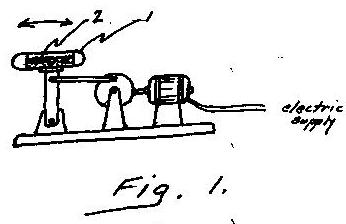
Fig. 2 illustrates a type of electromagnetic vibrator to accomplish the some result as in
Fig. 1.
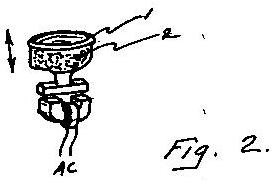
Fig. 3 illustrates a vibrator powered by magnetostrictive or electrostrictive ultrasonic
transducers. High frequency AC is supplied by oscillator 3 as shown. The high frequency of
vibration, over and beyond that possible in the apparatus of Fig. 1 and 2, provides greater
energy of excitation, and thus causes a further loss of weight than that possible with the
apparatus having lower frequency of vibration.

Fig. 4 shows a slightly different form of excitation apparatus - a grinder. The grinder shown
is a ball mill. The balls 4 may be steel, porcelain, or tantalum, depending upon the degree of
excitation required. Jar 5 should preferably be made of porcelain. The mill is rotated by motor
6.
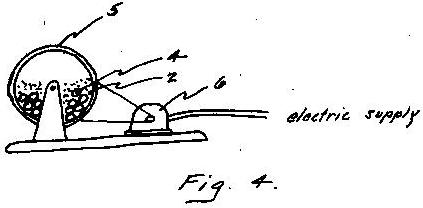
Fig. 5 shows a still different form of apparatus - a sanding machine. The method here is to
grind or abrade the surface of a susceptible solid 7, such as granite, sandstone, porcelain or
the like so as to cause it to become excited.
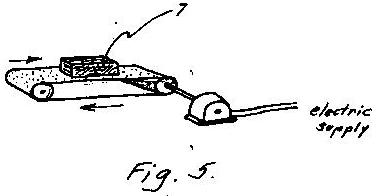
In Fig. 6 the some idea is set forth as in Fig. 5, except that grinding or abrasion is
accomplished by sand blasting. Sand is blown by compressed air at high velocity against target
(susceptible) material 8 , causing the material to become gravitically excited.
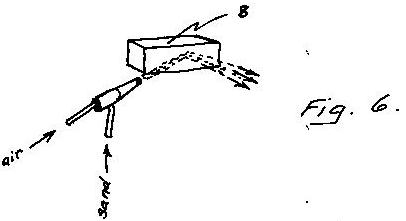
In both Fig. 5 and 6, the ablation fragments and impact ejecta may be gravitically excited after
impact, and this material may also be collected and utilized.
While ;n the foregoing, interparticle friction has usually resulted in loss of weight, it is
conceivable that in certain instances, depending upon the materials used (especially light
components) a gain in weight may sometimes be observed and possibly utilized. Hence, in the
appended claims, only alteration of weight lies within the intended scope of the invention.

I claim:
1) Method for producing gravitationally-anomalous materials consisting in containing a volume
of loosely-held particles thereof, vibrating said contained V04ume and utilizing the resultant
interparticle friction to produce gravitationally-anomalous material.
2) Method for producing lighter-than-normal material consisting in loosely holding together a
volume of particles thereof, vibrating said volume and utilizing the interparticle friction to
produce a loss of weight of said material.
3) Method for inducing a loss of weight in a material consisting in holding the particles
thereof in frictional contact, rubbing said particles together by mechanical shaking and
utilizing the resultant interparticle friction to cause loss of weight of said material.
4) Method of controlling the effect of gravity upon two or more mosses, consisting in placing
said mosses in physical contact, moving said mosses with respect to each other and utilizing
the resultant friction to alter the weight of said mosses.
5) Method for causing two material bodies to become gravitationally lighter consisting in
placing said bodies in physical contact, energetically rubbing said bodies together and
utilizing the resultant inter-body friction to cause loss of weight of said bodies.
6) Method for altering the weight of particulate matter consisting in containing the particles
thereof, providing interparticle vibration and utilizing the resultant interparticle friction
to alter the weight of said matter.
7) Method for reducing the weight of material consisting in subjecting said material to grinding
forces so inter-grain cleavage and friction results, continuing said grinding for a period of
time and utilizing the cumulative effects of said grinding to reduce the weight of said
material.
8) Method of controlling gravitation as it affects matter consisting in energetically crushing
said matter, continuing said crushing for a period of time and utilizing the cumulative effects
of said crushing to affect the weight of said matter.
9) Method of altering the combined weight of two solids consisting in rubbing one of said
solids against the other, continuing said rubbing for a period of time and utilizing the
resultant friction to after the combined weight of said solids.
10) Method of altering the combined weight of two solids consisting in accelerating one of said
solids toward and against the other of said solids, causing the impact to produce friction and
utilizing said friction to alter the combined weight of said solids.
11) Method of altering the weight of a mass consisting in directing a high velocity molecular
jet toward and against said mass, causing the impact- to produce impact friction upon the
surface of said mass and utilizing said impact friction to alter the weight of said mass.
12) Method according to Claim 1, including means to energetically vibrate said materials over a
period of time.
13) Method according to Claim 8 including means such as a ball mill.
14) Method according to Claim 10 including sand blasting means.
15) Method according to Claim I I including a high velocity jet of gas or liquid.
Thomas Townsend Brown
April 1, 1973
Witness
J. Patrick Quillin 4/11/73
Josephine B. Brown 4/1/73
Please be advised that this document is copyrighted © by The Townsend Brown family. All rights reserved.
Please see Legal and Copyright Information for additional copyright information.













